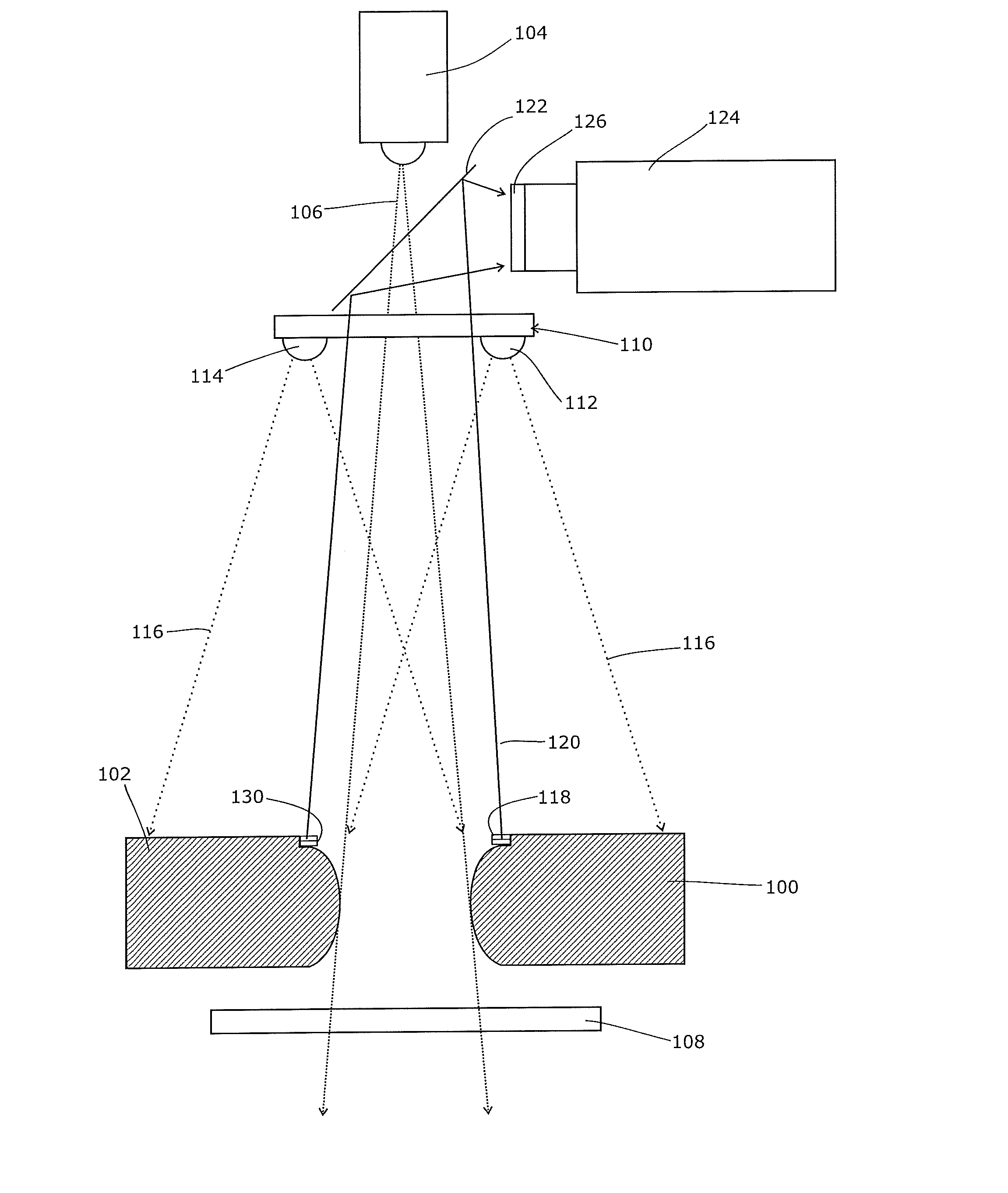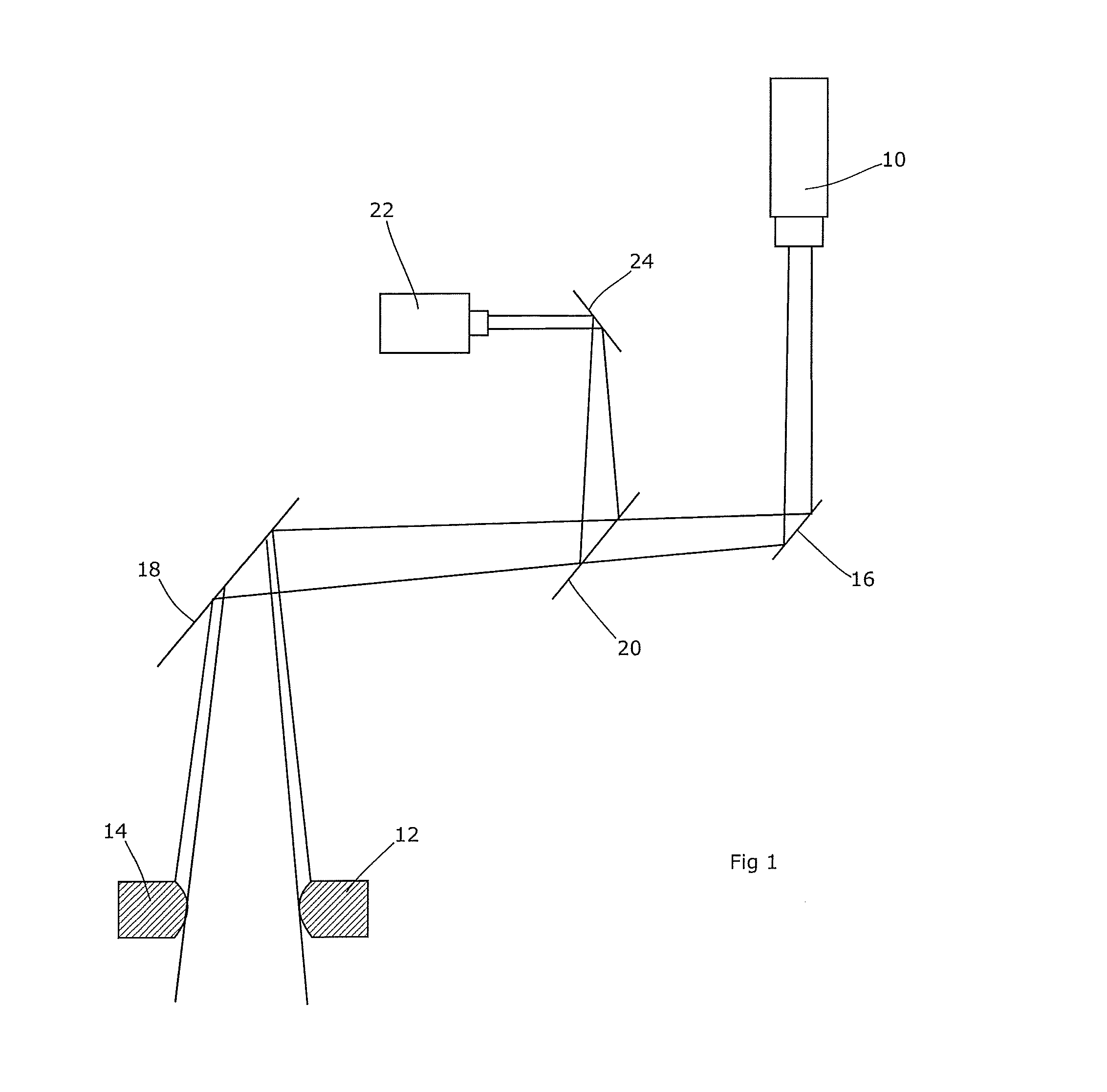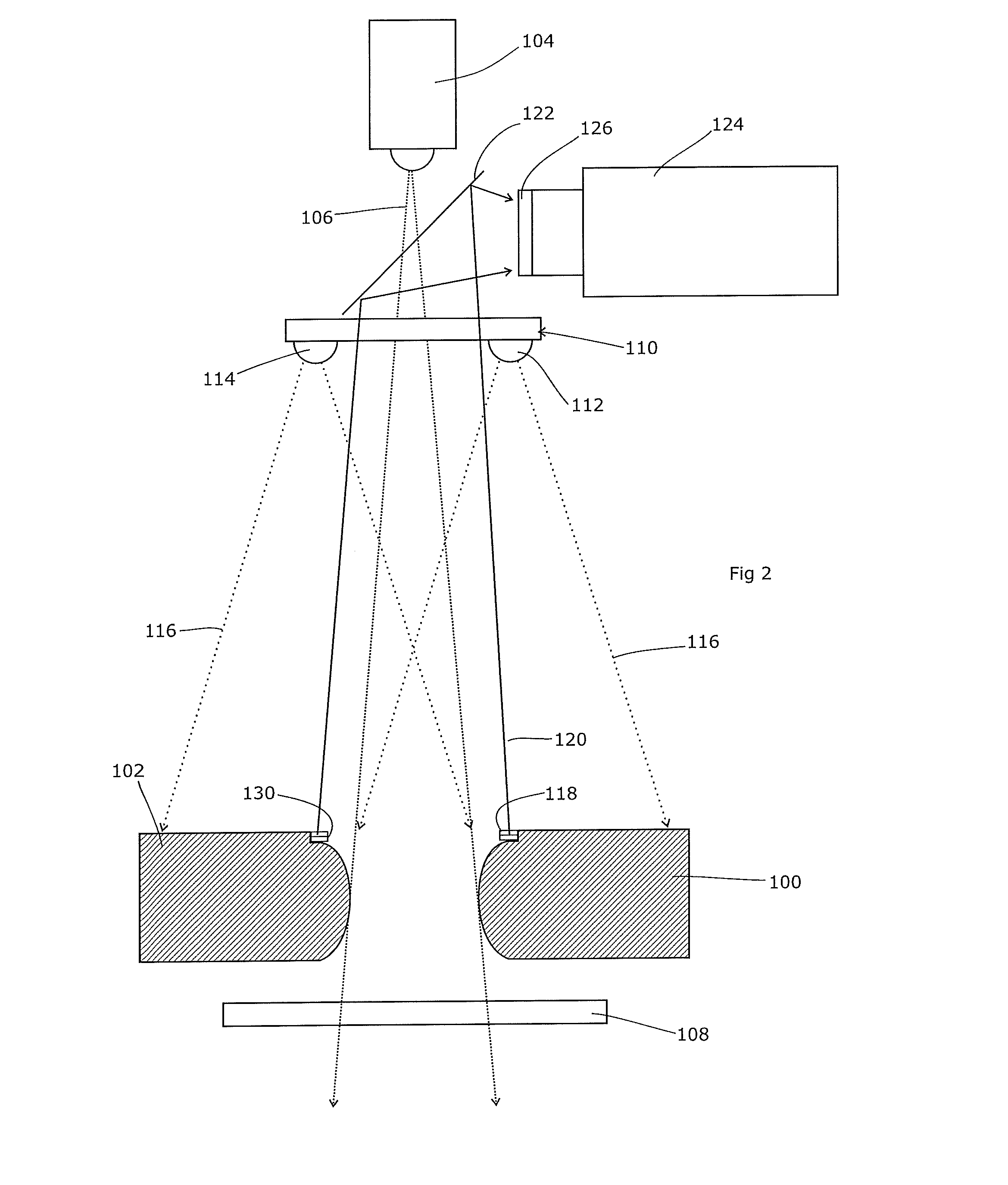Machine vision system
a machine vision and system technology, applied in the field of machine vision systems, can solve the problem that it is not inconceivable to provide a mixed system, and achieve the effects of enhancing the contrast of the image, enhancing and improving the accuracy and/or robustness of identification
- Summary
- Abstract
- Description
- Claims
- Application Information
AI Technical Summary
Benefits of technology
Problems solved by technology
Method used
Image
Examples
Embodiment Construction
[0024]The present invention will be described in relation to sensing the position of a large number of MLC leaves within a radiotherapeutic apparatus. As noted above, these leaves operate within a harsh environment in terms of the ionising radiation that is deliberately created within the radiotherapy head and into which they must project in order to carry out their function. This harshness presents difficulties in the provision of a machine vision solution to leaf monitoring that is stable and reliable in the long term. The solution adopted in relation to the MLC leaves is of course applicable in other situations, particularly (but not exclusively) environments that are harsh or which present difficulties in distinguishing illuminated markers.
[0025]FIG. 2 shows an example of the present invention. For simplicity of illustration, the mylar mirror 18 of FIG. 1 has been omitted, so straight paths for some of the optical systems are shown. In practice, this mirror will of course be pro...
PUM
 Login to View More
Login to View More Abstract
Description
Claims
Application Information
 Login to View More
Login to View More - R&D
- Intellectual Property
- Life Sciences
- Materials
- Tech Scout
- Unparalleled Data Quality
- Higher Quality Content
- 60% Fewer Hallucinations
Browse by: Latest US Patents, China's latest patents, Technical Efficacy Thesaurus, Application Domain, Technology Topic, Popular Technical Reports.
© 2025 PatSnap. All rights reserved.Legal|Privacy policy|Modern Slavery Act Transparency Statement|Sitemap|About US| Contact US: help@patsnap.com



